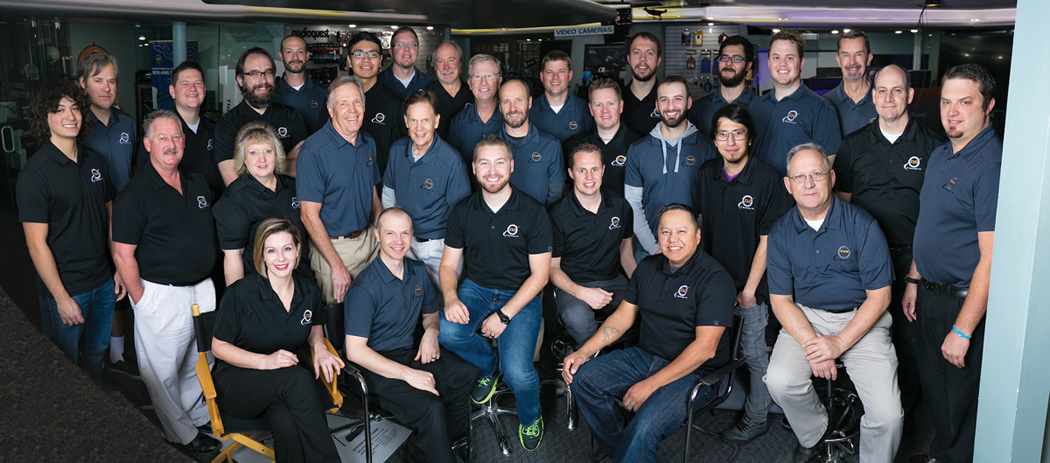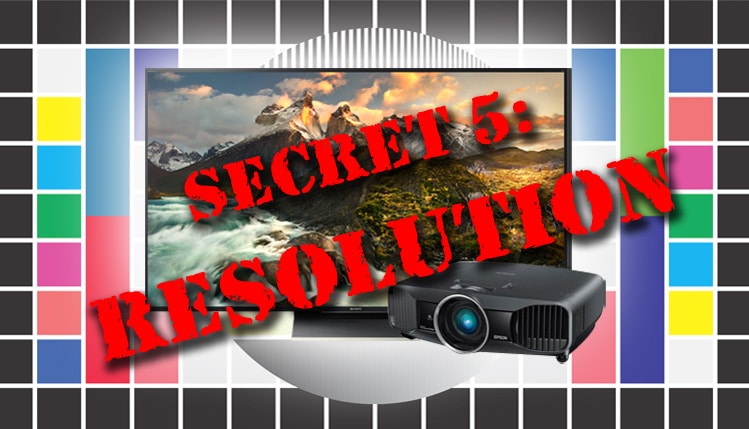AV Solutions, Home Theater
Top 5 Secrets to Best Picture Quality: Secret 5 – TV Resolution
Last Secret to Best Picture Quality: TV Resolution
The last secret to getting the best picture quality is TV Resolution. Resolution is usually the most promoted and over-hyped feature of the majority of ads promoting TVs and Projectors.
The real secret is that resolution alone does not promise a good picture. In fact, the other 4 secrets, if done right, can even make up for lower resolution. It is best, however, to have high resolution, good contrast, color, and sharpness. Having those is ideal and is now possible in some of the mid-level and high-end flat screen TVs and newly introduced projectors (see additional info in the download version). The ability to do deep blacks and bright highlights along with state-of-the art image detail processing and accurate rich color are more important than just the number of pixels or overall resolution of the picture.
Here’s a simple test to show the importance of the first 4 secrets.
Which of the two images below is the better picture, A or B?

Picture A.

Picture B.
Easy right? Most people will say B. Why? B has better sharpness and slightly better contrast. The resolution, however, is another matter. Picture A has almost three times the resolution or pixel count of image B. The original image was reduced in resolution and then enlarged back to the same size as A with very basic and simple detail enhancement.
Here’s the point: A good TV or projector, with good execution of four of the above secrets, would actually look better to the eye than a very high resolution version without as good execution.
Sound confusing? It could be, but as of this writing, it really isn’t a problem because the manufacturers have chosen to only give their best image technology and processing to their highest resolution products. It would be possible to apply the new technology and better image processing to current resolution products but that may be a few years down the road. For now, it is something that the manufacturers will reserve for their higher resolution and more expensive products.
Here’s another example.

Low resolution (original pixel count) with good contrast, sharpness and color.

High resolution (native pixel count) with fair contrast and sharpness. Both images have the exact same color levels. (compare at 4 inches wide or above)
Again, most people will perceive the lower resolution image as the better picture. Even though we know and look more closely when actual human faces are involved, our eyes and perception still react to contrast and sharpness over resolution. Where this may come into actual buying decisions is in smaller LCD/LED TVs and entry level projectors. In those cases it is possible that a lower resolution (720p) image could actually look better and give higher satisfaction than a full HD (1080p resolution) version. It would all depend on the contrast capability (blacks and highlights) and the type and the inclusion of a good or very good image processing system – not just the TV resolution.
There are actually two main characteristics of resolution that need to mentioned. One is a technology design characteristic and the other, which we have already discussed above, is the detail processing, or sharpness, of the image. They both affect our perceived quality of the display. The native technology characteristic is called rise time, reaction time, or in the case of a camera, depth of modulation. Since we are focusing on just the display side of imaging in this discussion we will focus on just the rise time or the ability of the flat screen TV or projector to display its full resolution. Since most, if not all, current products are now digital pixel based – whether it is OLED, LCD/LED, LCD, DLP, or LCOS – the older analog rise time is really a thing of the past. Knowing that means that we can trust the pixel count given for two different products and the quality decision will come down to execution of the first four secrets listed above.
Conclusion and Summary:
Understanding these secrets can go a long way into getting the very best picture quality out of your current flat screen TV or projector. If you have already invested into a TV, you might find it helpful to get a basic calibration Blu-ray or the Extron Shootout Software as they can help make sure you are getting the best picture quality your display is capable of. If you can justify the cost, a calibration by a professional is usually better.
If you are in the market for a new TV or projector and understand these fundamental characteristics and secrets, they can help you make the best decision for your new TV. Certain things like black levels and detail processing can make a huge difference in picture quality and in many cases will cost no more than those products that do not have these levels of performance – so it pays to compare and shop around. The new HDR TVs can make the most sense if you are looking for high end performance and resolution. Even in these models, however, the quality can vary greatly between black level capability, color, and detail processing – so make comparisons and ask questions. For more information see the downloadable version of this blog.
Read about the 4th Secret to Best Picture Quality: TV Sharpness ->
Written by Ted Bollinger
Ted Bollinger has been in the professional display and electronic imaging industry for over 40 years. He has worked with and consulted with most major manufacturers’ engineering representatives of professional and consumer flat screen TVs and projectors. He is currently with TVS Pro and serves as the manager for professional display products.





